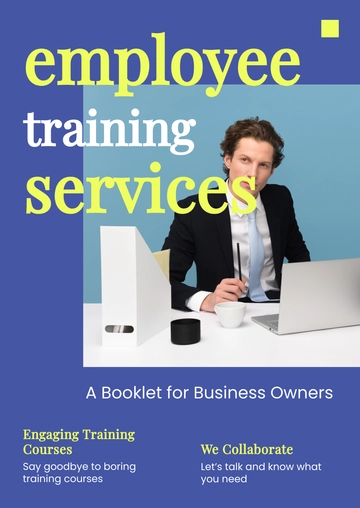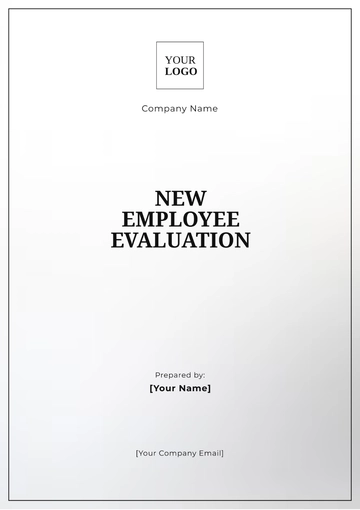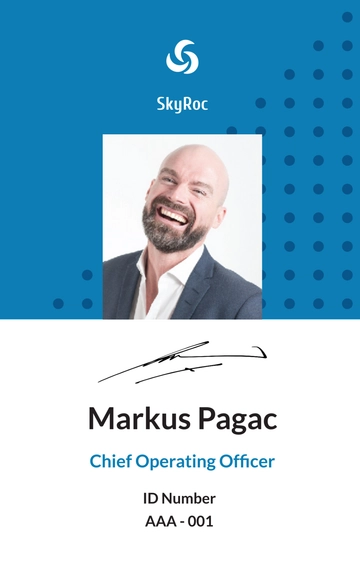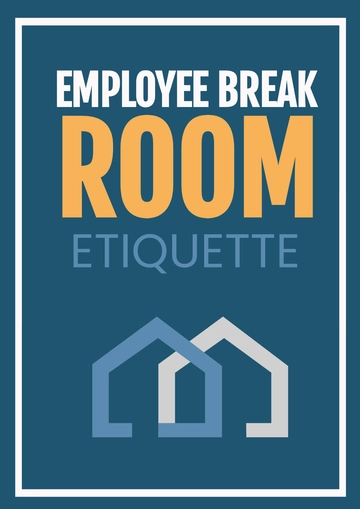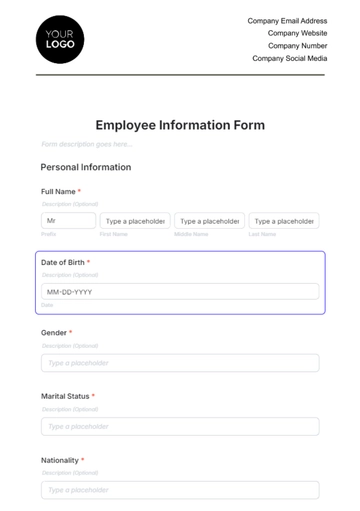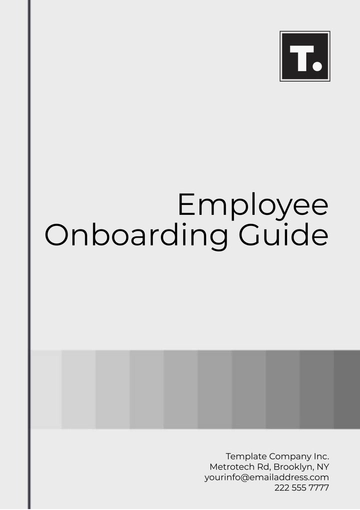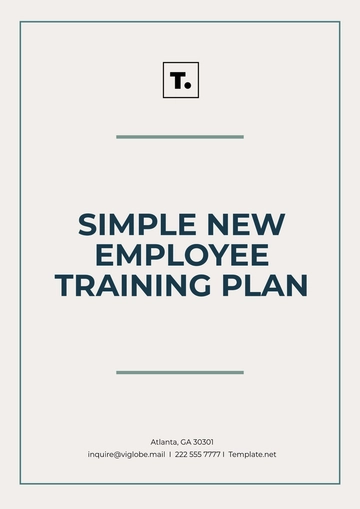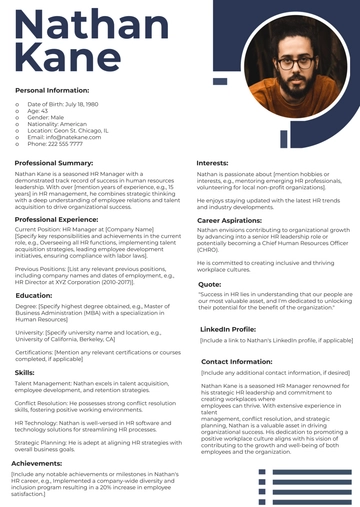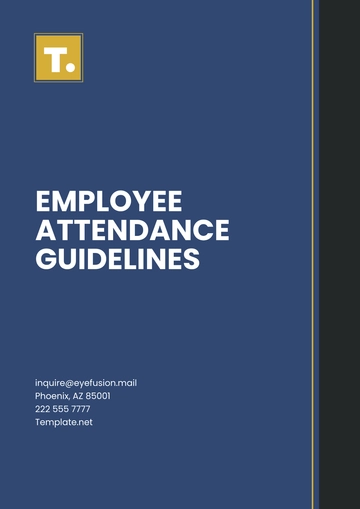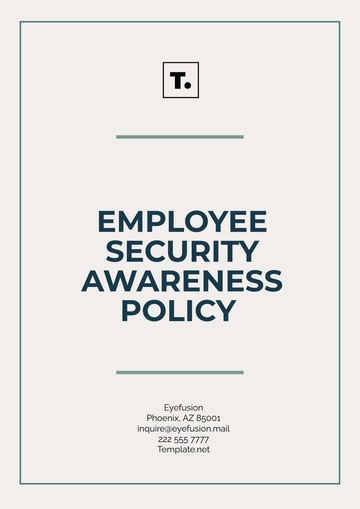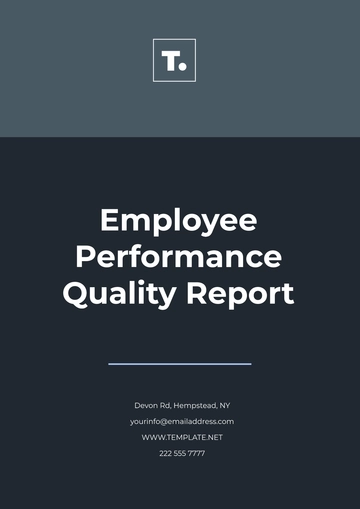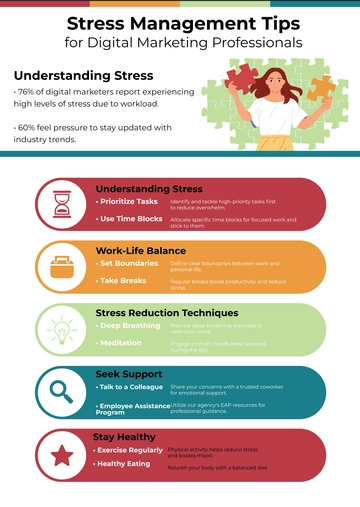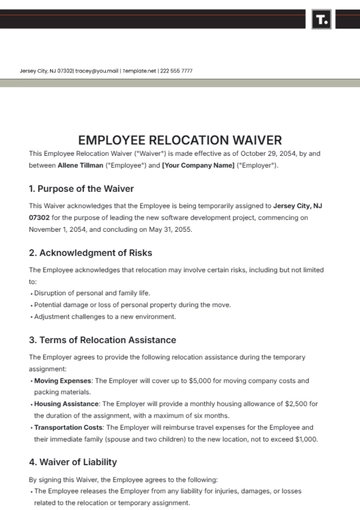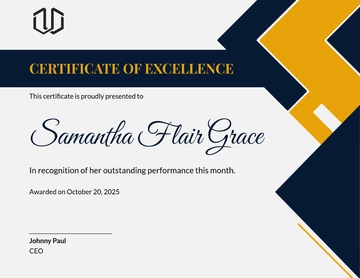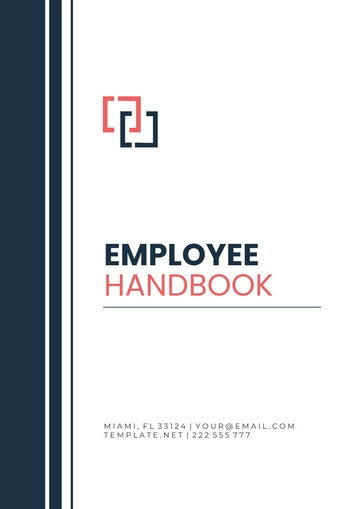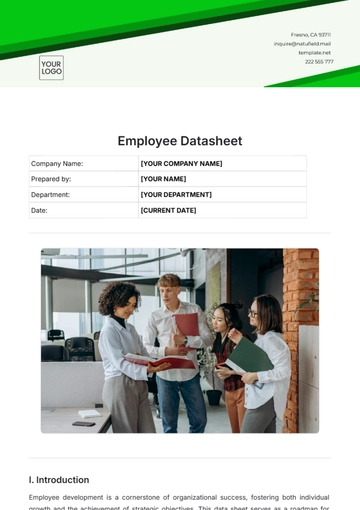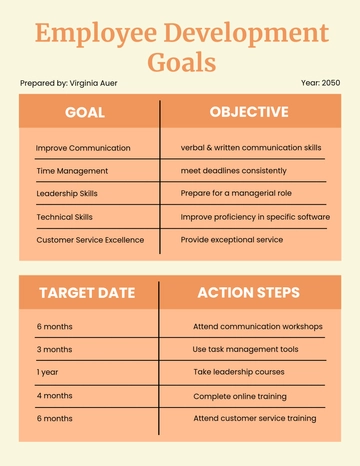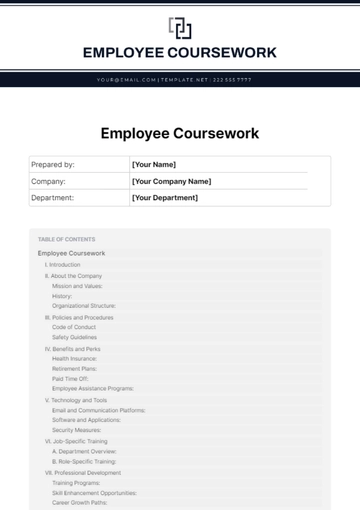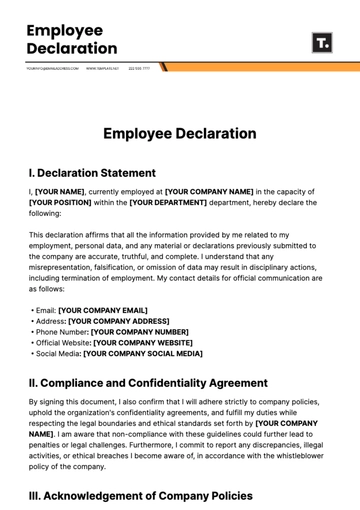Free Manufacturing Employee Safety Report
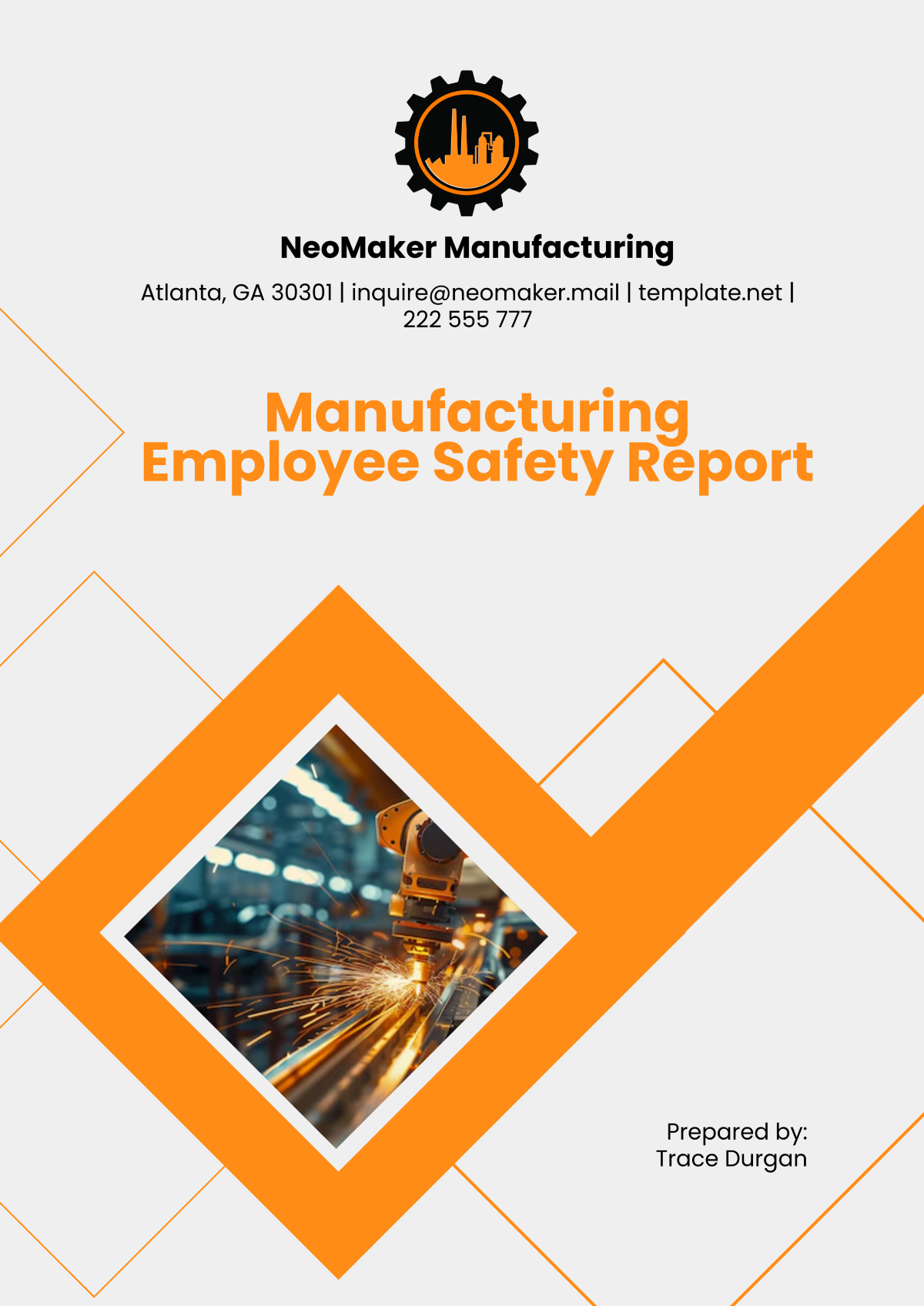
I. Executive Summary
[Your Company Name] has implemented various safety initiatives to reduce workplace hazards and promote a secure environment in the year [2051]. This report provides a detailed overview of employee safety performance, challenges faced, and actionable recommendations to mitigate risks and enhance protective measures moving forward.
II. Safety Performance Overview
This section outlines the year’s safety performance metrics, including incidents, near-misses, and compliance rates. These indicators provide insights into the effectiveness of existing safety protocols.
A [22%] decrease in reported incidents reflects the impact of proactive measures like increased training and safety drills. However, a [15%] rise in near-miss reports suggests that employees are more vigilant and willing to report potential hazards, signaling an improved safety culture.
Metric | Value | Change from 2050 |
|---|---|---|
Compliance Rate | 97% | +5% |
Safety Training Attendance | 98% | +8% |
The compliance rate of [97%] highlights a strong adherence to safety protocols, supported by nearly universal participation in safety training programs.
III. Key Accomplishments
This section highlights the achievements made in employee safety during [2051], underscoring the company’s commitment to continuous improvement in this critical area.
Expanded Safety Training Programs: The company introduced specialized training modules tailored to department-specific risks, enhancing employees’ preparedness. These sessions resulted in higher awareness and improved responses to safety challenges.
Achieved Certification in Advanced Safety Standards: Successfully attaining ISO 45001 certification validated the company’s safety management systems. This achievement bolstered the company’s reputation and strengthened its compliance with international safety standards.
Decreased Incident Rates Across Departments: Workplace injuries decreased significantly due to the implementation of better equipment and proactive safety monitoring.
Launched a Near-Miss Reporting Incentive Program: Encouraging employees to report near-misses through rewards created a culture of accountability and prevention.
Enhanced PPE Accessibility and Quality: Investing in state-of-the-art personal protective equipment (PPE) ensured that employees had reliable tools to safeguard themselves.
IV. Ergonomic Assessment and Initiatives
Ergonomics plays a critical role in employee safety, particularly in reducing workplace injuries and enhancing productivity. [Your Company Name] conducted a detailed assessment of workplace ergonomics and introduced targeted improvements.
Workstation Adjustments: Adjustments to desks, chairs, and workstations were implemented to promote proper posture and reduce strain. This initiative benefited employees working in office settings and reduced musculoskeletal complaints.
Ergonomic Equipment Distribution: Equipment such as anti-fatigue mats and adjustable tools was provided to employees in high-activity roles. This equipment enhanced comfort and reduced the risk of repetitive stress injuries.
On-Site Assessments by Experts: Ergonomics professionals conducted bi-annual site visits to evaluate workspaces and recommend improvements. Their insights ensured that workplace designs met the highest standards of safety and comfort.
The ergonomic initiatives led to a significant improvement in employee satisfaction related to workplace conditions. Incident reports linked to ergonomic issues decreased, reflecting the program's tangible impact on safety and health.
V. Incident Reporting System Upgrades
An effective incident reporting system ensures swift response and comprehensive tracking of workplace safety issues. [Your Company Name] upgraded its reporting protocols in 2051 to enhance accuracy and employee participation.
Streamlined Reporting Process: A user-friendly online platform was launched, simplifying the process of reporting incidents and near-misses. Employees could submit reports anonymously, encouraging greater transparency.
Automated Alerts: The upgraded system provided immediate alerts to safety teams upon incident submission. This enabled faster responses and minimized the impact of potential hazards.
Enhanced Feedback Mechanisms: Employees received updates on the status of their reports, fostering trust and demonstrating the company’s commitment to addressing safety concerns.
Training on Reporting System: Training sessions were conducted to familiarize employees with the new platform and emphasize the importance of timely reporting. These sessions helped embed a culture of accountability.
The upgraded incident reporting system increased reporting rates compared to the previous year. This improvement provided valuable data for strategic planning and contributed to a proactive safety culture.
VI. Training Programs
The training programs conducted during [2051] focused on equipping employees with essential safety knowledge and skills.
Program | Frequency |
|---|---|
Fire Safety | Quarterly |
Equipment Handling | Monthly |
PPE Usage and Maintenance | Bi-Monthly |
Stress Management | Bi-Annual |
Attendance Rate
High attendance rates across core safety programs reflect the company’s emphasis on employee preparedness. However, the relatively lower participation in stress management programs highlights an area for further improvement in promoting mental health.
VII. Challenges Identified
Despite progress, certain challenges persisted, which necessitate focused efforts for resolution.
Inconsistent Hazard Reporting in Remote Sites: Some remote facilities reported delays in hazard identification and communication. This inconsistency created gaps in addressing risks and required better monitoring systems for such locations.
Mental Health and Safety Awareness: Employees reported increased stress levels associated with workload. Mental health awareness campaigns were insufficient and required a more robust approach to balance workplace well-being.
Regulatory Requirements: Adapting to new safety regulations required constant updates in compliance protocols, straining resources. This challenge emphasized the need for a dedicated team to monitor changes and train staff accordingly.
Wear and Tear of Safety Equipment: Frequent use of safety gear led to faster degradation, resulting in inconsistent quality across different shifts. Ensuring timely maintenance and replacements became a recurring issue.
VIII. Recommendations
Based on the challenges, these recommendations aim to enhance safety protocols and ensure continued employee protection.
Implement Advanced Reporting Systems: Deploy real-time digital tools for hazard reporting, especially for remote sites, to improve the speed and accuracy of communication.
Introduce Comprehensive Mental Health Programs: Launch initiatives like stress management workshops, access to counselors, and designated wellness days. Addressing mental health proactively will create a safer and more productive workplace.
Establish a Regulatory Compliance Team: Form a dedicated task force to track safety regulations and ensure immediate adaptation. This team can also provide ongoing training to maintain compliance and reduce resource strain.
Upgrade and Monitor Safety Gear Inventory: Develop an automated inventory system to track PPE usage, monitor wear, and schedule timely replacements. Quality checks before every shift can further reduce inconsistencies in gear safety.
IX. Next Steps
Building on the success of [2051], [Your Company Name] will implement forward-thinking strategies to further improve employee safety in the coming year. These next steps focus on technological advancements, enhanced communication, and continuous improvement in safety standards.
Integrate Wearable Safety Technology: The company plans to roll out wearable devices that monitor employee health indicators and provide real-time alerts for hazardous conditions.
Develop Cross-Departmental Safety Teams: Cross-functional teams will be established to ensure uniform safety practices across all departments. These teams will facilitate knowledge sharing and address department-specific challenges.
Launch Advanced Risk Assessment Tools: Leveraging AI and predictive analytics, the company aims to identify potential safety risks before incidents occur. This data-driven approach will enable targeted interventions and resource allocation.
[Your Company Name] remains committed to maintaining a safe, healthy, and efficient work environment that prioritizes employee well-being while driving operational success.
- 100% Customizable, free editor
- Access 1 Million+ Templates, photo’s & graphics
- Download or share as a template
- Click and replace photos, graphics, text, backgrounds
- Resize, crop, AI write & more
- Access advanced editor
The Manufacturing Employee Safety Report Template on Template.net enables teams to document workplace incidents, safety concerns, and corrective actions effectively. This editable and customizable template can be personalized using the Ai Editor Tool to align with organizational safety policies. Utilize this template to foster a proactive and secure work environment.
You may also like
- Employee Letter
- Employee ID Card
- Employee Checklist
- Employee Certificate
- Employee Report
- Employee Training Checklist
- Employee Agreement
- Employee Contract
- Employee Training Plan
- Employee Incident Report
- Employee Survey
- Employee of the Month Certificate
- Employee Development Plan
- Employee Action Plan
- Employee Roadmap
- Employee Poster
- Employee Form
- Employee Engagement Survey
